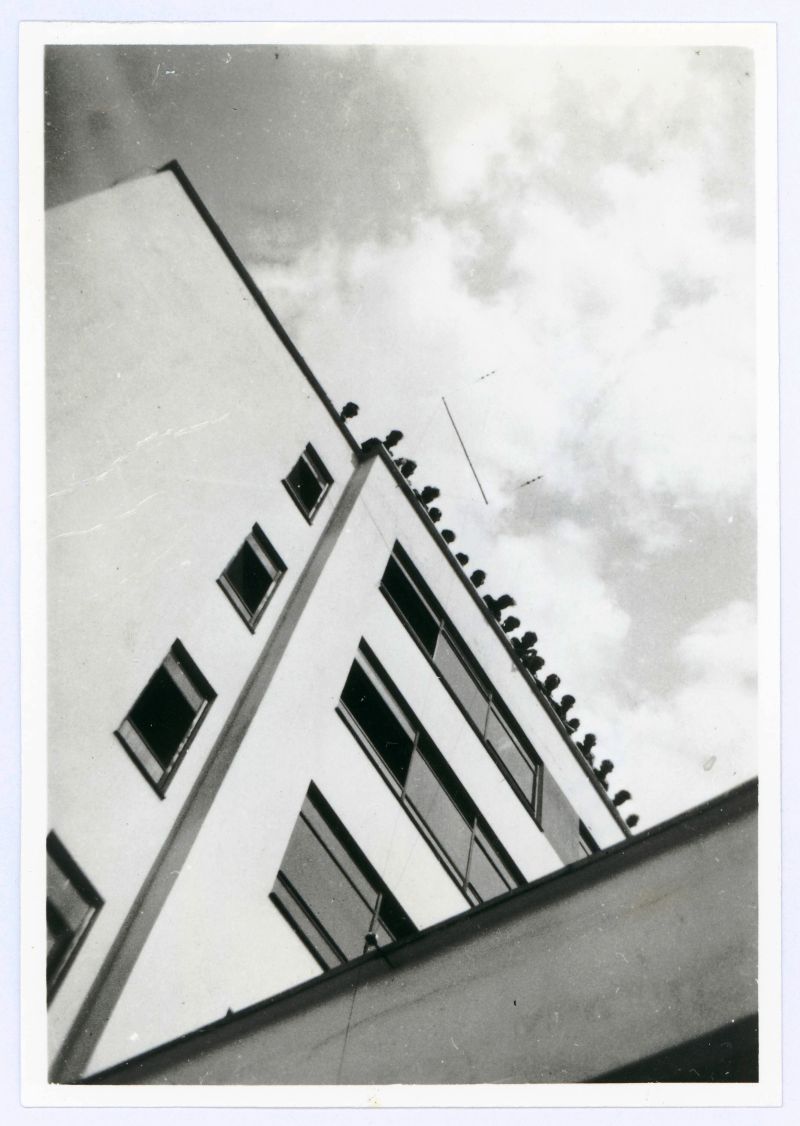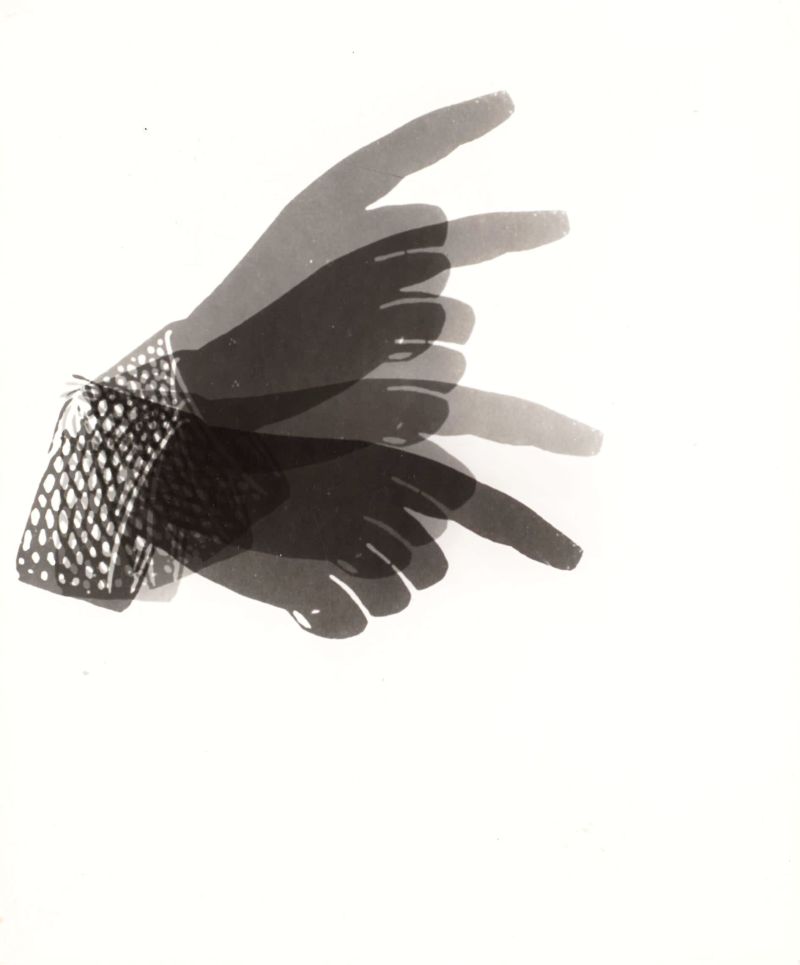
Bauhaus Photo Exhibits Prove Surprising
 |
|
|
When people in the 21st century think of the Bauhaus, the early-to-mid 20th century school of art and design in Germany that helped give birth to modernism, the word 'austere' often comes to mind.
“Less is more,” an aphorism used often by one of the school’s directors, Mies van der Rohe, is one explanation. Flat roofs of the sort later adopted by builder Joe Eichler are another.
But pop into the jolly exhibit of about 70 photos at the Center for Architecture and Design, at the offices of the American Institute of Architects in San Francisco, and you may come away with another impression:
These Bauhaus boys and girls had a lot of fun.
'bauhaus.photo,' as they call the show, is a two-venue exhibit. Another 30 or so works are hanging at the Museum of Craft and Design in the City’s Dogpatch district. bauhaus.photo is drawn from the collection of, and organized by, the Bauhaus-Archiv/Museum für Gestaltung, Berlin. It is a touring exhibition marking the centenary of the school’s founding.
bauhaus.photo continues through November 8.
 |
|
|
A third exhibit, not officially tied to bauhaus.photo, is on display at the Robert Koch Gallery which, like the AiA gallery, is also in downtown. New Bauhaus in America, which is up through November 30, takes the tale of the Bauhaus a bit further – to America, where László Moholy-Nagy formed the New Bauhaus in Chicago in 1937, four years after the Nazis put the original out of business.
bauhaus.photo shows mostly recent prints from period negatives. The Koch shows mostly prints done in the period by the hands of the photographer. Koch focuses largely on the lively work of Gyorgy Kepes, but includes photos by his mentor, Moholy, as well as by followers Arthur Siegel, M. Halberstadt, and Henry Holmes Smith.
But back to those boys and girls. In the AiA exhibit, we see the young Bauhaus students enjoying what one panel calls “the adventure of setting off into an uncertain future, full of zeal.” They are enjoying life away from their parents, clambering about the white-walled buildings with roof terraces and ship-like balconies.
The show is filled with intense, sometimes cryptic, sometimes revealing portraits students and teachers shot of each other. We also see some buildings from the first generation of the Modern Movement that went on to influence developments in California.
Photography is not the best known of the arts that was taught and produced in the school. But, according to bauhaus.photo curators, “There could hardly have been a more fitting medium to convey this Bauhaus principle than photography.”
 |
|
|
The principle in question was the goal of combining mastery of industry and craft with mastery of design.
Kepes, indeed, saw photography as central to the new movement in art, rejecting painting “as a reactionary medium.” This comes from a new book, also worth checking out in this centenary year, ‘Gyorgy Kepes: Undreaming the Bauhaus,’ by John R. Blakinger.
Blakinger’s book is fascinating for people interested in the Cold War years as it explores Kepes’s time at MIT, working with both artists and scientists who were designing nuclear bombs. Blakinger says Kepes served both as “a prophet of the Cold War and an avatar of its anxieties.”
“He was the last of the Bauhaus modernists, resigned to proselytizing the Bauhaus idea after the Bauhaus was no more,” Blakinger writes.
For pure enjoyment of art, the Koch exhibit prevails. These are later works, after Moholy and Kepes fled Europe and its approaching war for the United States. In general they are more abstract, more daring, at times more political than the images at the AiA gallery.
The Koch gallery says of the exhibit: “Our New Bauhaus in America exhibition includes likely the most comprehensive and largest gallery exhibit of György Kepes's work in decades, with 48 works, plus two collaborations with M. Halberstadt.
“Also included in this exhibition is work from others in the New Bauhaus milieu, including mixed media works by László Moholy-Nagy (gouache and ink on paper, serigraph on paper, and vintage photogram), along with photograms by Arthur Siegel, solarized photographs by M. Halberstadt, and experimental light and color abstractions by Henry Holmes Smith.”
 |
|
|
Many, if not most, images at Koch are manipulated, combing photos, mixing abstract with representational images, and creating 'photograms' without the use of a camera at all. You see the variety of this late Bauhaus work, suggesting Constructivism, Surrealism, and more.
The specter and actuality of war are seen in many of these pictures. Consider the 1942 silhouette of a tank by Kepes.
But other moods prevail as well, including romance – combined with menace? Consider Kepes’s film noir-ish portrait of his wife, Julia – who resembles actress Ingrid Bergman – with a skein of shadows, as though cast from prison bars, against her face.
Also by Kepes is a wall filled with images of floating eyeballs in some photos, and hands in others.
What do these eyes mean? Discernment? Surveillance? And the hands? The tools of the artist’s trade. The artist’s hand? Hands to manipulate? Hands to control?. Hands that can affect changes?
Not every image in the Koch exhibit is a photo. There is a beautiful, abstract serigraph by Moholy, a Surrealist collage of a skeleton on a table by Kepes, and a few others.
The exhibit is useful in showing the work of artists who learned from their Bauhaus predecessors, including M. (Milton) Halberstadt, who worked in San Francisco. The show includes his spooky portrait of the San Francisco modernist jeweler Margaret de Patta.
The impact of Bauhaus photos on design in and around California was profound. Halberstadt employed the look and thinking of the Bauhaus during a long and important career in commercial art. Arts & Architecture magazine, so many LP covers and book illustrations, and so many other designs, were equally inspired by the Bauhaus, which began as a school but ended up as a way of looking, thinking, and working.
 |
|
|
- ‹ previous
- 69 of 677
- next ›



